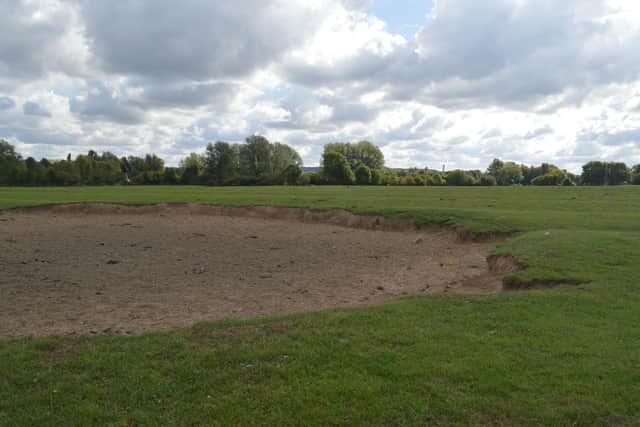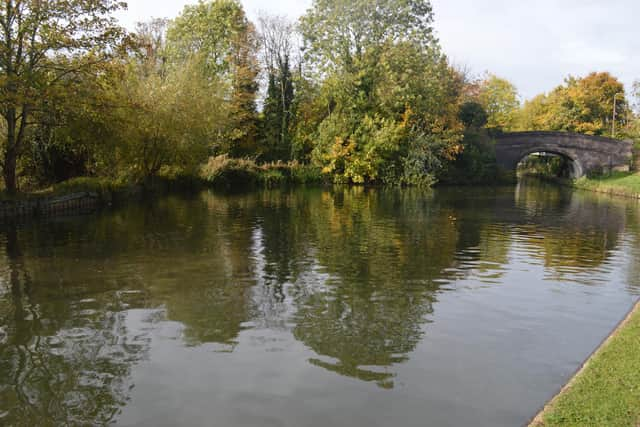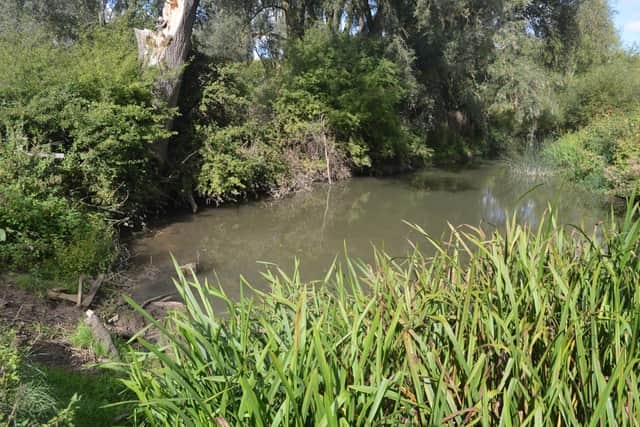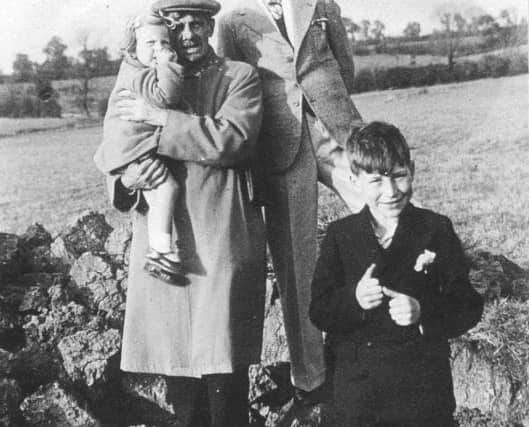Special research reveals string of bomb craters in Milton Keynes
and live on Freeview channel 276
One man’s research has revealed a series of bomb craters still remaining in MK following a night of drama almost exactly 82 years ago.
World War Two buff Chris Brown has spent hours locating the craters, some of which have been turned into scenic ponds that are now havens for wildlife.
Advertisement
Advertisement
He has researched a German air raid that happened on November 10 1940 over the North Bucks countryside that was many decades later to become Milton Keynes.


At the time, Britain was more than a year into conflict with Germany. Norway, Denmark, The Netherlands, Belgium and France had fallen and the Dunkirk evacuation was a recent memory. The Battle of Britain has been fought and won and the RAF had control of the skies by day only.
In the early hours of November 10, at least four long range Luftwaffe bombers, possibly JU 88 “schnellbombers”, flew into North Bucks at almost 300mph, having crossed the coast from the East to avoid London air defences.
Their target was a low stretch of the Grand Union canal with the nearest locks at Fenny Stratford and Cosgrove – a 14 mile uninterrupted stretch of water. The aim of the raid was to cause as much damage as possible to the canal and disrupt its vital role in carrying war munitions and supplies.
Advertisement
Advertisement
Flying straight and relatively low from north west to south east, the bombers released their load, one bomb at a time, to create a line of destruction more than two miles long with each bombs around 250 yards apart.


They all exploded, and each created a 20 to 30 yard wide crater on impact.
Chris, who lived at Woolstone and is a STEM Ambassador for The National Museum of Computing at Bletchley Park has spent hours scouring MK to find evidence of these craters.
He found the first two next to the canal, either side of the bridge at Marsh Drive in Great Linford.
Advertisement
Advertisement
The next two came alongside the canal at what is now Campbell Park and Newlands, followed by one at Little Woolstone, directly on the bank.


Again in Little Woolstone, there is a crater close to Newport Road and Linford Lane. The next bomb just missed Newport Road to the west, opposite the Barge Inn. The next impacted just yards east of Newport Road, and damaged the road, said Chris
"The impacts leave craters in the fields and carry on through Woughton- on-the-Green, very close to the River Ouzel, before ending a mile to the south east of the first impact and about 200 yards short of Walton Hall.”
“There are four parallel lines of impact craters on the exact same south east bearing, creating a corridor of destruction about 400 yards wide, perhaps more. At least one and perhaps two of these appears to have hit the Ouzel.”
Advertisement
Advertisement
Chris believes there were at least 80 impacts in all, which would have been a terrifying ordeal for people living in nearby farmhouses.


The morning after the riad, the damage on the ground was assessed and recorded as “damage to crops” with no human casualties, he said.
“Later in the war, Italian prisoners of war were put to work in these same fields and some of the craters are filled in, with trees planted in a few," said Chris.
But, he says, the remaining craters have left a positive legacy. One is a now village pond, one is a popular car park, next to Woolstone Green, and another is now part of the allotments for residents just off Woolstone’s Newport Road,
Advertisement
Advertisement
"Three more craters form semi-circular bites out of the canal, and are still used as turning points for canal traffic.”
Some of the craters are unrepaired and can be see today along the canal and in the Woolstones, Campbell Park and the Ouzel Valley Park.
Indeed, one Campbell Park crater has been enlarged and landscaped to become a special wildlife pond.
Overall, the November 20 raid was a failure and did not achieve the damage it set out to cause, said Chris.
Advertisement
Advertisement
However, three weeks earlier, on Sunday October 20 1940, a similar mission caused major destruction and casualties near the Grand Union canal in New Bradwell.
‘Bradwell's Blitz’ saw two flares were dropped at the end of Bridge Street. They landed on the allotments, which are now the school playing fields.
Then two large bombs were dropped at the end of the High Street, the first landing in the road, creating a 30ft crater, and the second at the end of the high street. The blasts demolished three houses and sadly killed five people.
The railways were also bombed in North Bucks during WW2, with some craters visible near the line at Newton Longville.
Advertisement
Advertisement
The Bletchley rail junction was also targeted where the main line meets the east west line. Luckily, the bombs missed Bletchley Park – the head of WW2 codebreaking activity - by just a few hundred yards.
”How things might have been different if they had struck lucky there,” said Chris. “This is no doubt why the Enigma code cracking Bombe machines were distributed around the area as soon as they were built.”
His research started out as just two bombs from the ‘Bombs Over Bucks’ we archive.
"it quickly go to 10 bombs and then literally exploded (excuse the pun!),” he said.
Chris has now appealed for any older residents who remember the local bombings to share their memories.